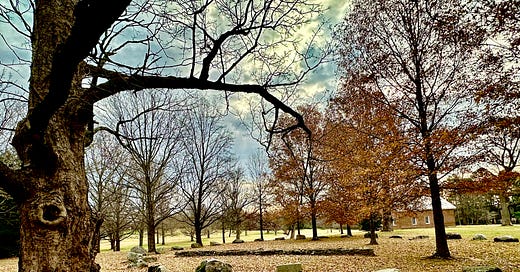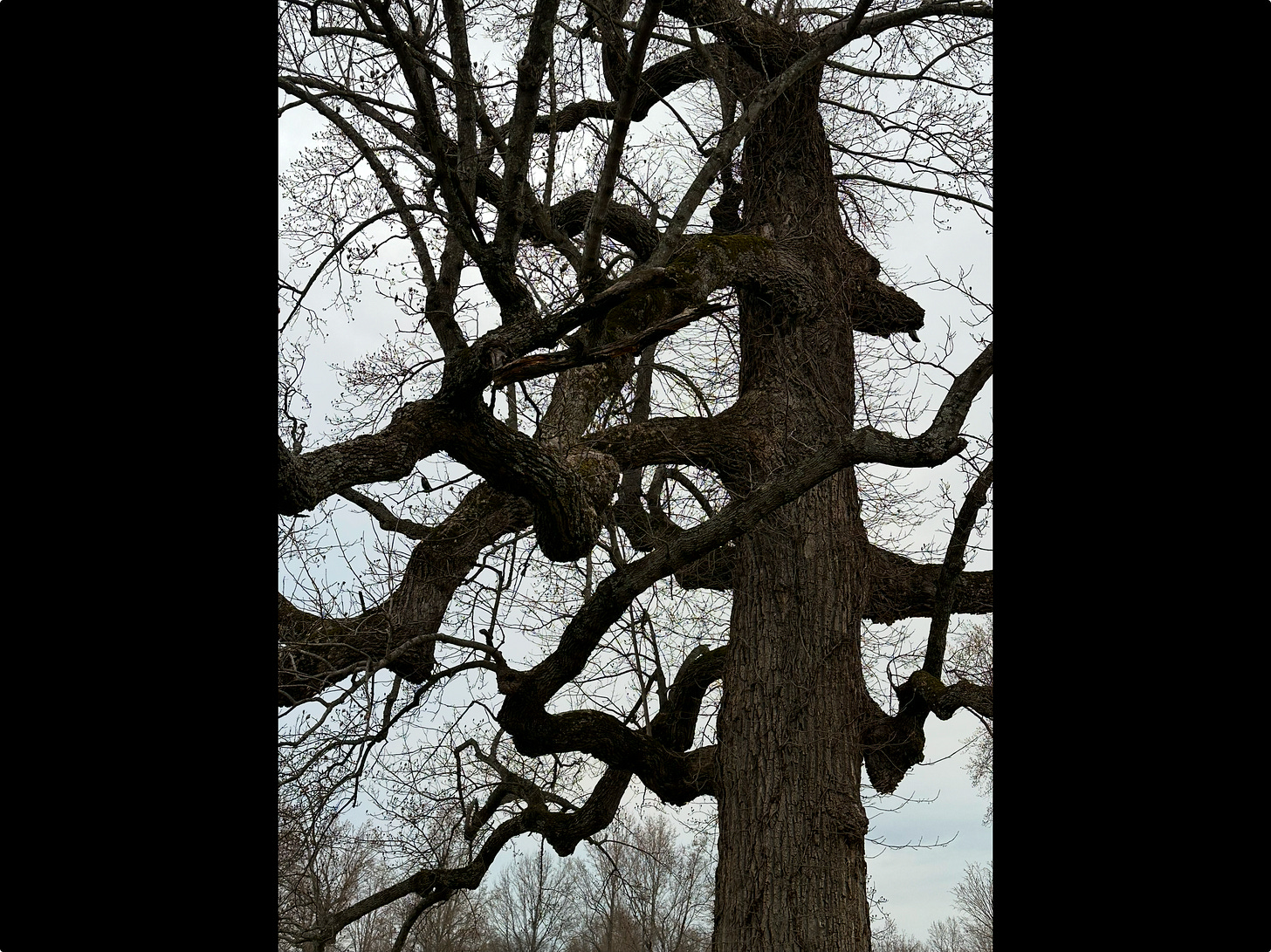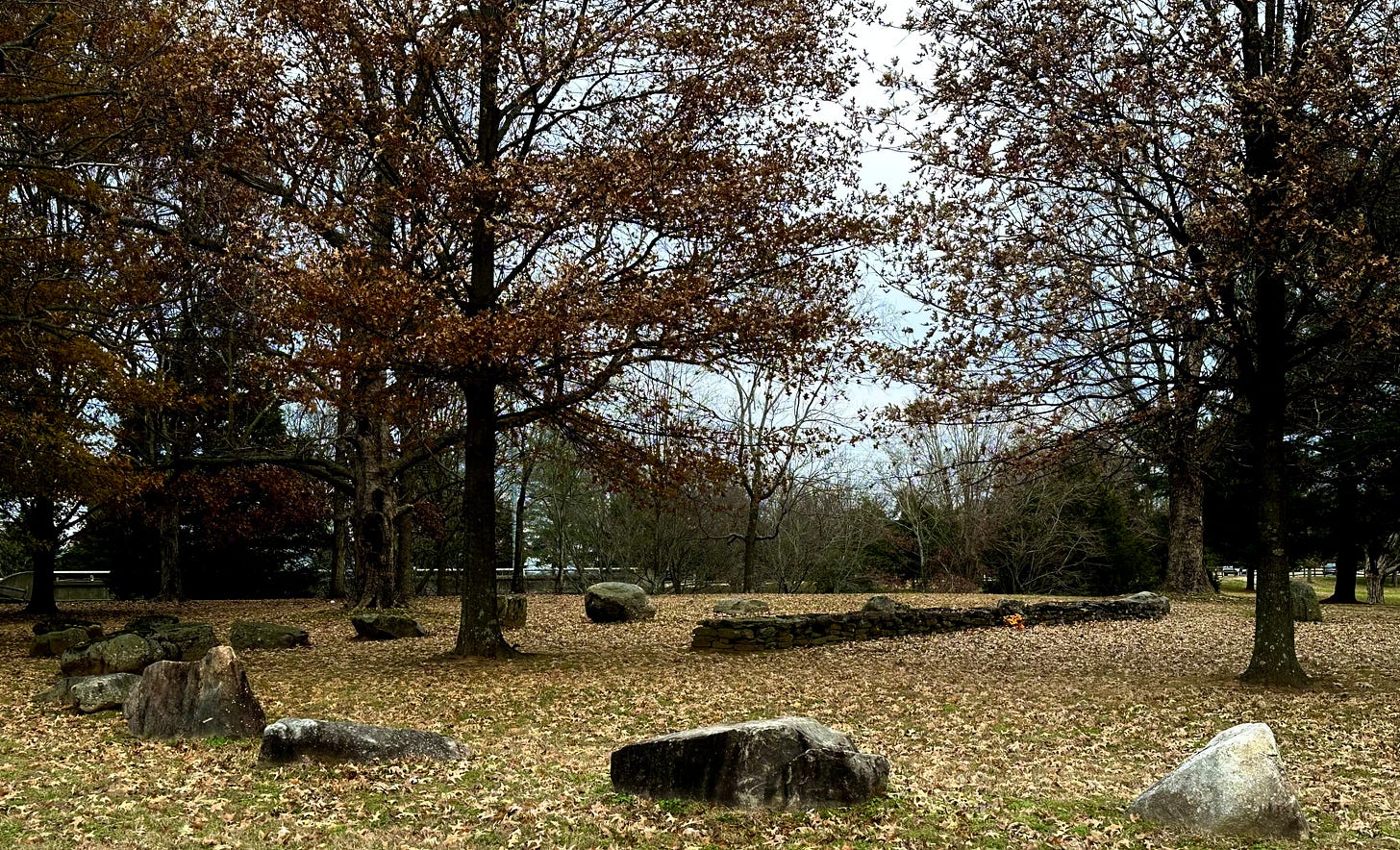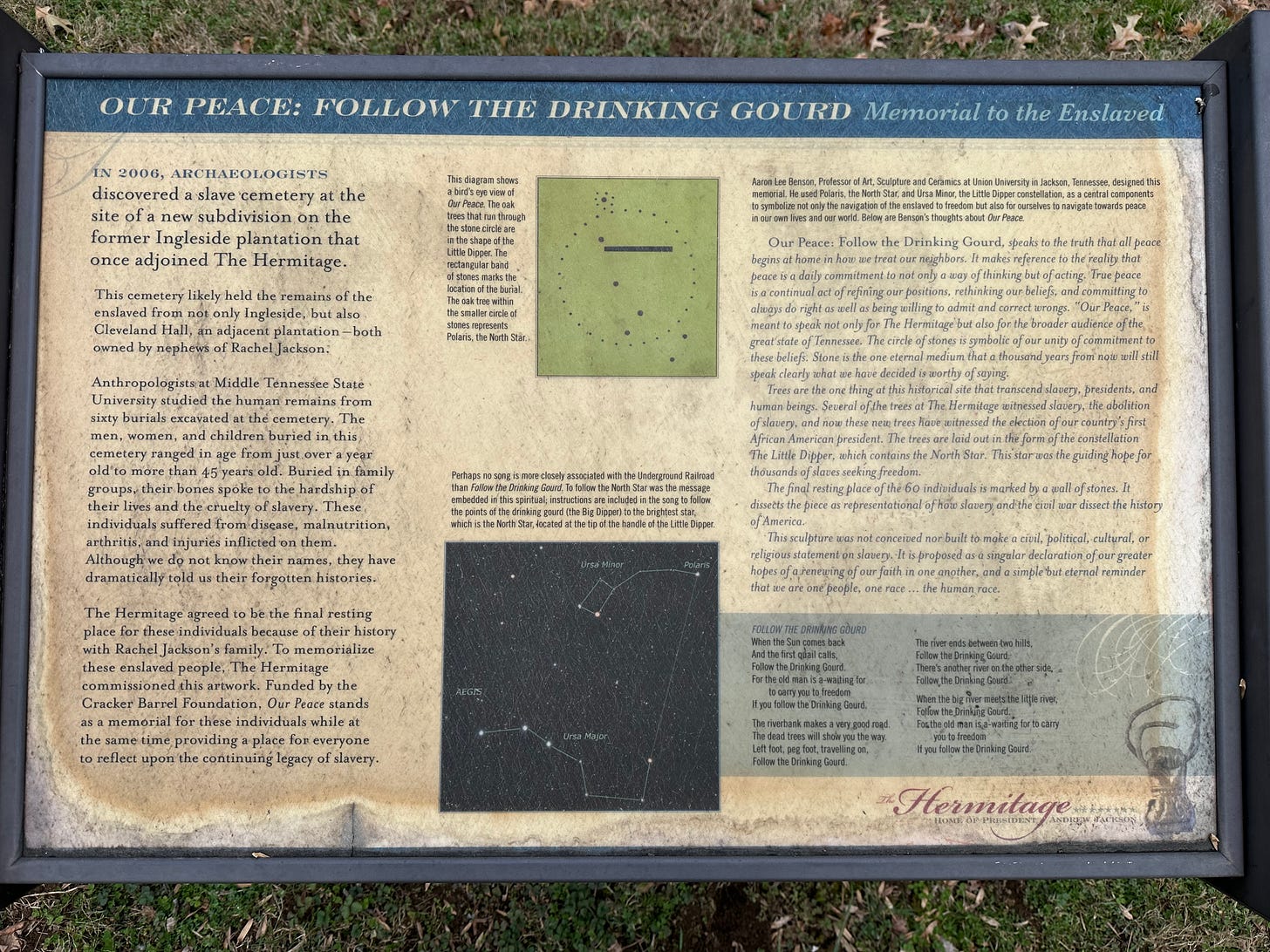Our Peace, Follow the Drinking Gourd
Trees and Memory: One artist’s sensitive memorial to the buried enslaved at Andrew Jackson’s Hermitage in Nashville, Tennessee
Trees are the one thing at this historical site that transcend slavery, presidents, and human beings. Several of the trees at The Hermitage witnessed slavery, the abolition of slavery, and now these new trees have witnessed the election of our country's first African American president. -Aaron Lee Benson, Artist
Going home for me these days means visiting my mother and sister’s family in a suburb of Nashville called Hermitage. The Hermitage is the name of the plantation home of Andrew Jackson, one of our more notorious US presidents (1829-1837). This essay isn’t about being home (none of us is actually from Tennessee), the Age of Jackson, or plantation architecture. It’s about trees and how they are witnesses to Our Story, the good and not-good.
One of the original tulip poplar trees planted at Tulip Grove, a relative’s plantation mansion neighboring The Hermitage
It has taken a few weeks to process the power of exploring these grounds at dawn, on Christmas Eve.
That morning, I walked down from Mom’s new condo and slipped through a hole in the fence to explore the parklike grounds of Tulip Grove. The hole is located across the street from Walmart, and adjacent to the Dollar Store. I needed to be surrounded by Nature and trees on this Christmas Eve morning as holidays can be complicated. I was missing my husband, John. As the sun came up, an extraordinary arboretum of old American trees bent down to welcome me and tell their story too.
Trees can be complicated.
On these acres, there is the Tulip Grove house: “considered one of the best surviving examples of Greek Revival-style antebellum homes in Tennessee”, according to the Hermitage website. But, there are also poignant places of deep Meaning located near the modest church used by land owners, the Free, and the Enslaved for centuries. A circular confederate veterans cemetery lies adjacent to the family cemetery among the arboretum. This cemetery is the remaining reminder of a veterans home that once stood nearby. Much of the cemetery was reassembled by the DAR in the 1940’s as urban sprawl erased various local family burial grounds here-and-there around The Hermitage protected land.
Baroque headstones look out of place
What can the trees tell about the enslaved? Artist Aaron Lee Benson and Our Peace 2008
This is what I really want to talk about. In all this loaded context, there is a tremendous work of public art here.
Background: A slave burial ground was discovered nearby during a construction project in 2006, and the remains of the sixty enslaved people were re-entered here by the plantation chapel (ages one to forty-five). According to the archeologists, their skeletal remains illustrated what a life of forced labor can do. The people were children who died too young, farm laborers, and skilled artisans. We don’t know their names, yet the trees may remember them as they worked and worshipped here on this land.
Artist Aaron Lee Benson was selected to design the poetic memorial that incorporates trees as part of the metaphorical storytelling of Meaning here. Benson is Professor of Fine Arts in Sculpture and Chairman of the Art Department at Union University in Jackson, Tennessee. Benson works mainly in clay like I work in clay.
Oak trees and circle of natural stones
What makes this work of public art so powerful is its quiet vocabulary of trees and undressed stone. The subtlety and closeness to the earth stands in noble contrast to over-manicured white monuments of the Confederate cemetery adjacent to this re-burial ground. Together, they create a spatial conversation that we’re only now just beginning to share, right? It’s complex.
The simple concept of the public artwork is the recovered human remains are located under the low stone wall, and this wall is surrounded by a fellowship of boulders that make a powerful suggestion of enclosure. It’s understood that visitors can decide for themselves if they feel welcome to enter the sacred, ancient-feeling, circle of stones.
Trees were planted through the circle to mark the constellation of the Little Dipper. The North Star (famously symbolic of the Underground Railroad) is marked by an older tree that can tell a story or three with its gnarled bark and insect damage. The spiritual, Follow the Drinking Gourd, is an Underground Railroad song about following the North Star to freedom.
The plan on the weathered plaque from 2008. You can read it on the Historical Marker Database: https://www.hmdb.org/m.asp?m=182548
As we ponder our own “stuff” on Dr. Martin Luther King Day and the Inauguration, I encourage you to sit with these words by Our Peace: Follow the Drinking Gourd artist Aaron Lee Benson. It’s no surprise to learn that Benson is the son of a minister:
Our Peace: Follow the Drinking Gourd, speaks to the truth that all peace begins at home in how we treat our neighbors. It makes reference to the reality that peace is a daily commitment to not only a way of thinking but of acting. True peace is a continual act of refining our positions, rethinking our beliefs, and committing to always do right as well as being willing to admit and correct wrongs. “Our Peace,” is meant to speak not only for The Hermitage but also for the broader audience of the great state of Tennessee. The circle of stones is symbolic of our unity of commitment to these beliefs. Stone is the one eternal medium that a thousand years from now will still speak clearly what we have decided is worthy of saying.
Trees are the one thing at this historical site that transcend slavery, presidents, and human beings. Several of the trees at The Hermitage witnessed slavery, the abolition of slavery, and now these new trees have witnessed the election of our country's first African American president. The trees are laid out in the form of the constellation The Little Dipper, which contains the North Star. This star was the guiding hope for thousands of slaves seeking freedom.
The final resting place of the 60 individuals is marked by a wall of stones. It dissects the piece as representational of how slavery and the civil war dissect the history of America.
This sculpture was not conceived nor built to make a civil, political, cultural, or religious statement on slavery. It is proposed as a singular declaration of our greater hopes of a renewing of our faith in one another, and a simple but eternal reminder that we are one people, one race … the human race.
Sycamores mark the path: past, present, and future at Tulip Grove











